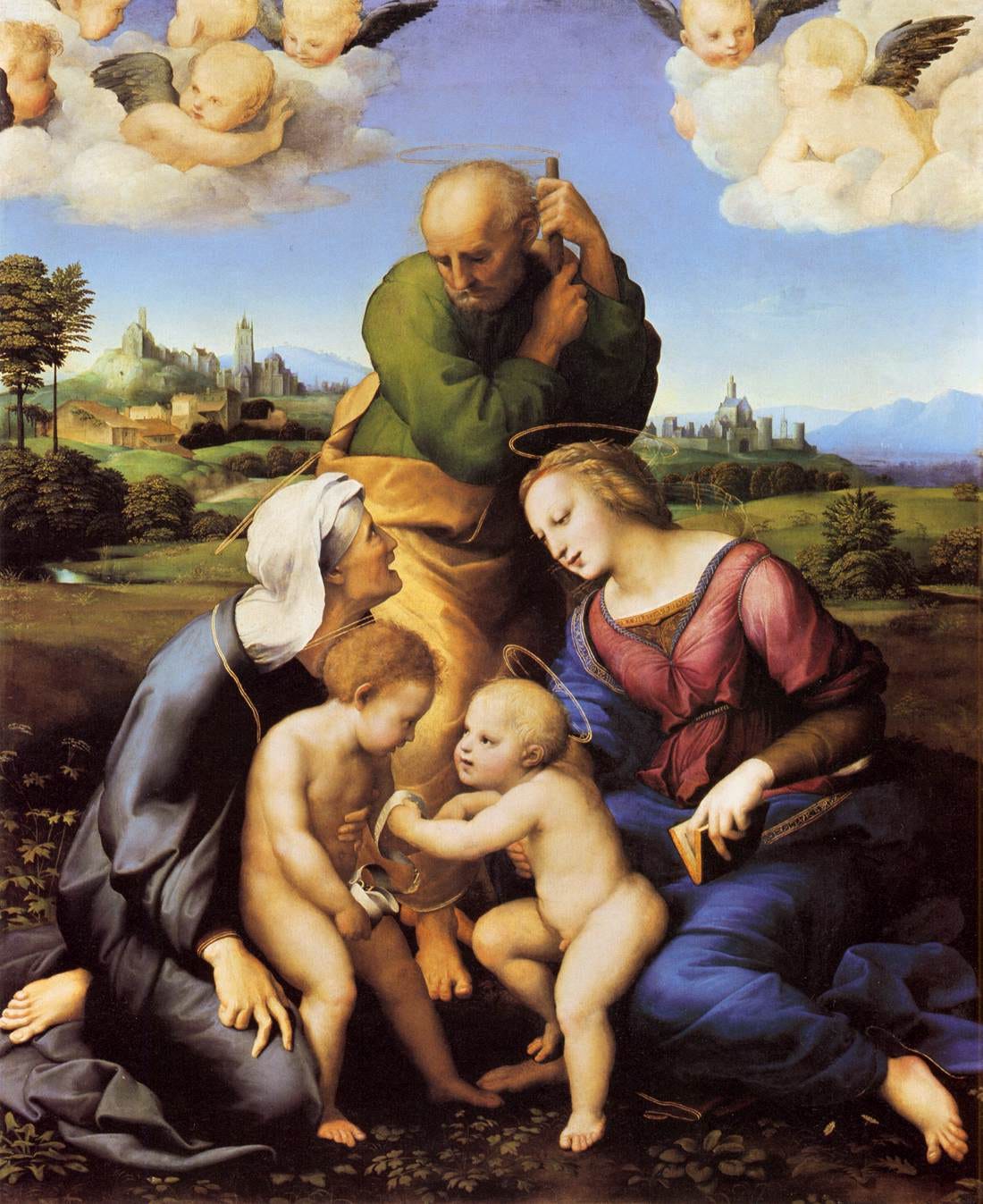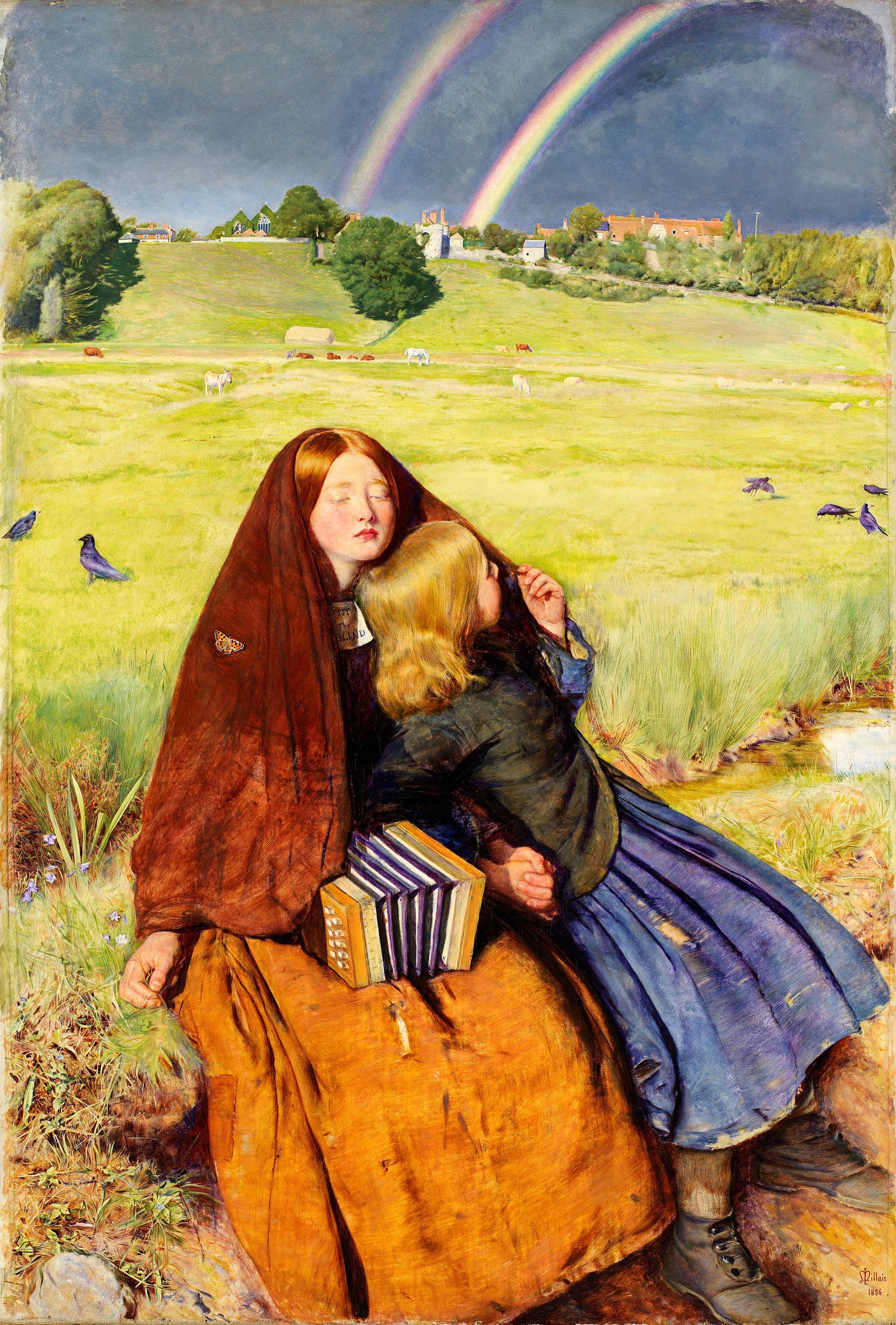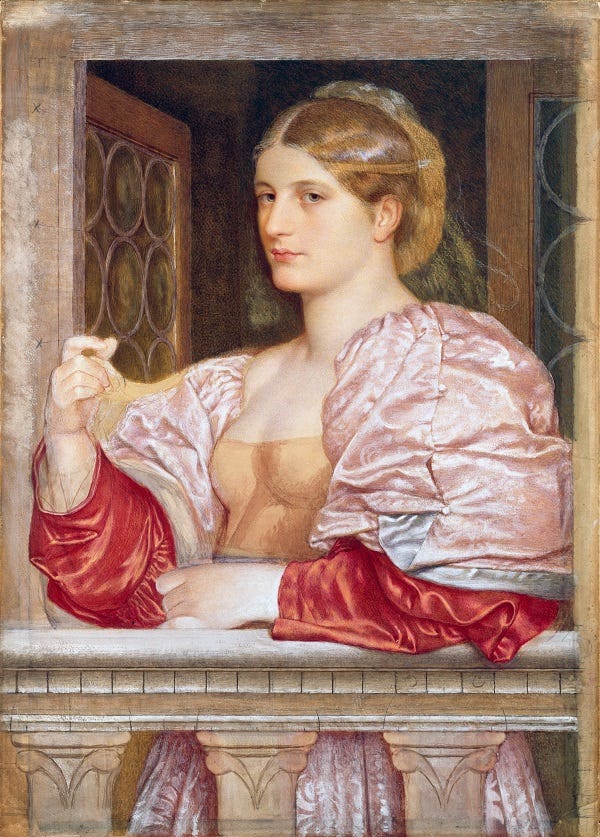William Burton’s A Blind Girl at a Holy Well and The Venetian Courtesan
A study of two works displayed at the 2018 retrospective of the work of William Burton at the National Gallery of Ireland entitled For the Love of Art Truth & Beauty
A retrospective of the work of Frederic William Burton (1816-1900) was held at the National Gallery of Ireland from 25 October 2017 to 14 January 2018 entitled For the Love of Art Truth & Beauty. Burton is not an artist well known outside of Ireland, but his painting Hellilil and Hildebrand, the Meeting on the Turret Stairs (1864) is, in that country, iconic.
Burton associated in London with the circle of artists around Dante Gabriel Rossetti (1828-1882), a member of the Pre-Raphaelite Brotherhood, which included John Everett Millais (1829-1896) and Edward Burne-Jones (1833-1898). By 1873, Burton was well established in London and in 1874 was offered the directorship of the National Gallery in London which led him to end his career as a painter. This study will examine two of Burton’s works on exhibition at the National Gallery of Ireland.
The first, A Blind Girl at a Holy Well – Scene in the West of Ireland (1840), since 2020 part of the collection at the National Gallery of Ireland, is a water colour on paper based on a series of sketches by Burton during his trips to Connemara between 1838 and 1840 with George Petrie (1789-1866), a noted musicologist and antiquarian.[1]
An engraving of the work was made by H.T. Ryall in 1841 following the purchase of the painting by The Royal Irish Art Union in 1840 and made the Blind Girl an icon of 19th Century Irish art.
The engraving is now in the British Museum and became the most popular image of its time. Queen Victoria acquired a copy and had it placed in a gold frame with Celtic emblems and, at the top, an imperial crown above the harp of Ireland, which was surrounded by shamrocks. In Burton’s watercolour, the blind girl’s head and shoulders are covered by a white shawl and a full-length venetian red dress. She is kneeling in front of a Celtic cross by the well. Her sister, a young girl, is seen from the side dressed in a white blouse with a venetian red dress raised at the front to reveal a white petticoat and wearing a white bonnet. She stands bare foot in the pool before the well and holds the blind girl’s outstretched right hand in her left hand and a bowl of holy water in her left in which she is about to place the fingers of the blind girl. To the right of the blind girl, kneels the mother dressed in a charcoal grey hooded cloak and venetian red dress with her raised hands clasping a rosary and her gaze directed sympathetically at the blind girl. The 1840 edition of The Dublin Review describes the scene: “The blind girl is led by the mother and sister over the mist-clad mountains to the well, whose sacred waters they pray may restore her sight. The sympathy and love with which the mother looks round to watch the effect of her prayers, gives the key to this subject, the revelation of a mother’s love” (qtd. in Christie’s). Christie’s lot essay on The Blind Girl speculates that the subject of the painting is based on The Dark Girl at the Holy Well, a poem of John Keegan (1809-1849) in which a blind girl laments that her blindness has not been cured by divine intervention, and that the blind girl is modelled on Maryanne, the oldest daughter of George Petrie. The composition of The Blind Girl is inspired by The Canigiani Holy Family (1507-1508) by Raphael (1483-1520) and is shown in the exhibition catalogue of the National Gallery (Crowley 16-17).
The Blind Girl is reminiscent not only of the paintings of Jean-Honoré Fragonard (1732-1806) on a maternal theme, but more proximately the oil painting The Blind Girl painted by John Everett Millais in 1856.
The second work of Burton is the unfinished painting A Venetian Courtesan (1873-1874), with a Miss Gardiner as model, of “watercolour, gouache, bodycolour, black chalk, pastel and graphite on paper” (Crowley 44-45).
Burton had visited Italy in 1864, spending two weeks in Venice, and may have taken his inspiration from that visit ten years later. Margaret Rosenthal explored the role of the courtesan in Venetian society in The Honest Courtesan, a study of Veronica Franco who lived from 1546 to 1591.
An exploitative use of female sexuality in the form of the courtesan, in particular the more common and less well paid prostitute, was intended, as Guido Ruggiero demonstrates in his sociohistorical study on sexual crimes in Renaissance Venice, to “meet the sexual needs of young males and partially to keep adolescent sexuality from doing even greater damage to society and family.” (Rosenthal 22-23)
The idealised courtesan represented by Burton belongs to the class of ‘honest courtesans’ (cortesane), exemplified by Veronica Franco, who were often difficult to distinguish in terms of dress and lifestyle from aristocratic women of the period, rather than to the class of common prostitutes (meretrici).
According to Niamh Me Guinne, Burton began work on A Venetian Courtesan, which was to be his last major work, in October 1873:
In October 1873 he began work on what is referred to as the ‘unfinished Balcony Picture’. Now known as The Venetian Courtesan, 95.2 x 68.5cm, it depicts the three-quarter-length figure of a woman standing at an opening with her arms resting on a balcony. She appears deep in thought as she stares out, quite melancholy and resigned. Burton wrote in 1859: ‘the first end of modern painting is the most thoughtful expression of human nature and human passion with the least possible physical action. Old tradition looks for its effect chiefly in gesture. Now it must be found in the expression of the face.’ Here the delicate expression is highlighted by the broader, rich red, pink and white sleeves that are reminiscent of Titian’s Man with a Blue Sleeve. A somewhat cryptic notebook entry for 1874 suggests that a Miss Gardiner might have been a model for the painting. … The image has been worked up using layers of watercolour and gouache in stipple and fine brushstrokes. There is some pastel used in the wisps of long hair, and oil crayon with scratching out in areas surrounding the face. Gouache has been used quite extensively, especially in the face and sleeve, and appears under ultraviolet light to contain a chalk white. Highlights in rose madder have been added to the red sleeves and lips. There is extensive use of gum arabic in the darker areas of the background. The background details such as the perspective of the opening have been mapped out using pencil, and a stencil appears to have been used to help delineate the opening. (24)
While Burton’s achievement was limited in terms of output, with his career as an artist ended at the age of 58, his technical mastery and association with the pre-Raphaelite school bestow on his work, and notably A Blind Girl at a Holy Well and The Venetian Courtesan, a resonance and lustre in the history of Irish art that was strikingly reaffirmed through the 2018 retrospective at the National Gallery of Ireland.
Works Cited
Christie’s. Frederick Burton: A Blind Girl at a Holy Well: A Scene in the West of Ireland. The Irish Sale, London 10 May 2007. www.christies.com/en/lot/lot-4902506.
Crowley, Claire, editor. Frederick William Burton: For the Love of Art. Curated by Marie Bourke, National Gallery of Ireland, 2017.
Lee-Howell, Luchia Meihua “George Petrie (1790-1866) and His Era: Investigation of George Petrie’s Artistic Status.” Academia, 2018, pp. 1-43. www.academia.edu/38480790/George_Petrie_1790_1866_and_his_era_Investigation_of_George_Petrie_s_Artistic_Status.
Me Guinne, Niamh. “A Venetian Courtesan by Sir F.W. Burton, R.H.A..” Studies in Conservation, vol. 43: sup2, 1988, pp. 24-24. DOI: 10.1179/sic.1998.Supplement-2.024.
Rosenthal, Margaret F. The Honest Courtesan: Veronica Franco, Citizen and Writer in Sixteenth-Century Venice. U of Chicago Press, 1992.
[1] See generally, Luchia Meihua Lee-Howell, “George Petrie (1790-1866) and His Era: Investigation of George Petrie’s Artistic Status.” Academia, 2018, pp. 1-43. www.academia.edu/38480790/George_Petrie_1790_1866_and_his_era_Investigation_of_George_Petrie_s_Artistic_Status.









